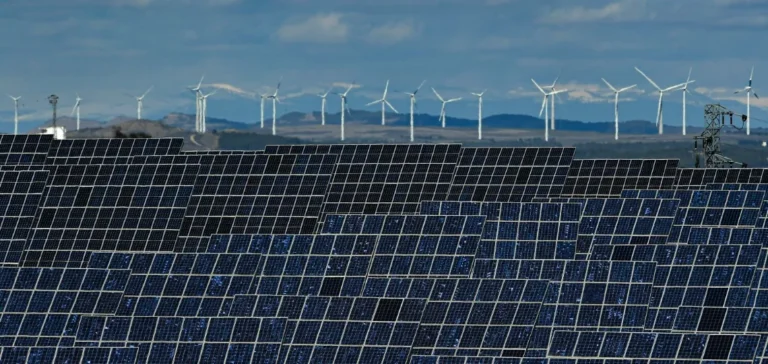The expansion of solar and wind generation was sufficient to cover the entire increase in global electricity demand between January and September 2025. Solar generation rose by 498 terawatt-hours (TWh), an increase of 31%, already surpassing its total output from the previous year. Wind added 137 TWh, representing a 7.6% rise. Together, the two sources delivered an additional 635 TWh, exceeding the 603 TWh rise in global electricity demand.
Decline in fossil fuel production
This trend kept fossil fuel generation slightly down, with a drop of 17 TWh (-0.1%) during the same period. It marks the first time since the Covid-19 pandemic that rising electricity demand did not lead to an increase in fossil generation.
Declines in China and India played a key role. China reduced its fossil generation by 52 TWh (-1.1%), supported by strong growth in renewable sources. India recorded a drop of 34 TWh (-3.3%), resulting from rapid solar and wind expansion combined with milder weather. These reductions offset minor increases observed in the European Union and the United States.
Solar leads structural change
Solar power led the sector’s growth, posting an expansion over three times larger than any other electricity source during the period. Solar installations continued at a steady pace, solidifying their role in covering incremental demand. Cumulative figures indicate a progressive reorganisation of global supply, marked by continuous increases in solar capacity.
This acceleration strengthened solar’s position in energy balances, particularly in Asia, where shifts in the energy mix strongly influence global dynamics. The observed trends show a reduced reliance on fossil plants to respond to demand fluctuations.
Moderate demand growth
Global electricity demand increased by 2.7%, down from 4.9% over the same period in 2024. This slower growth is linked to milder weather conditions, limiting cooling needs. The absence of prolonged heatwaves, especially in China, India and the United States, contributed to this trend.
The ability of renewable sources to exceed incremental demand is now a key focus for policymakers, as future energy balances will depend on demand trends and the pace of infrastructure deployment.






















